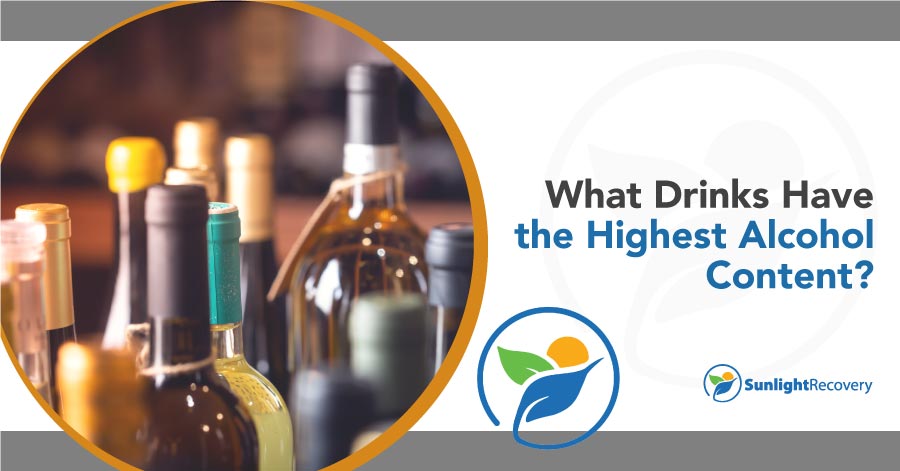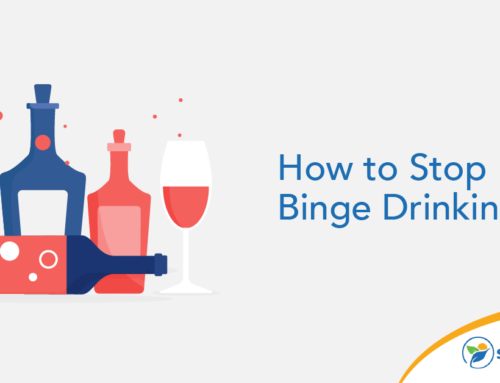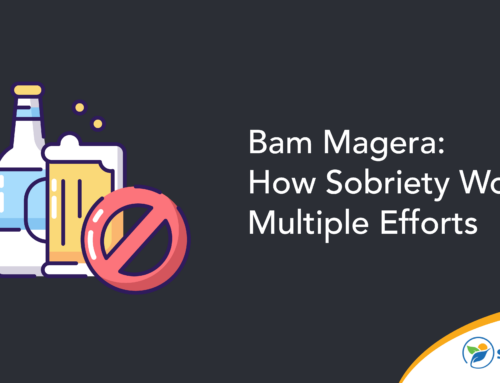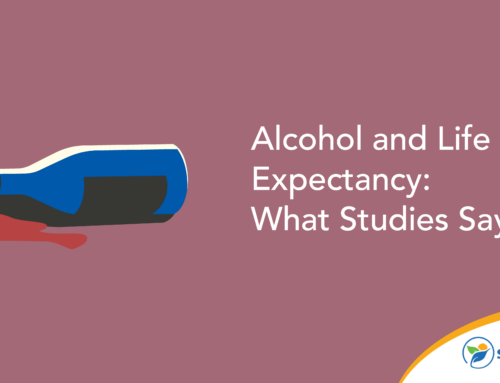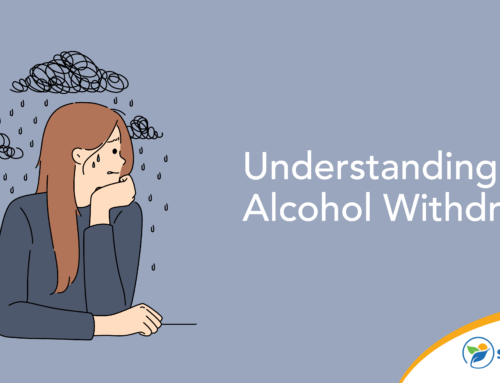Do you avoid a certain type of alcohol because the effects occur too quickly? Some people claim wine is a fast way to exceed your limit, while others might point to a cocktail or liquor. To determine which types of alcohol affect you the fastest, look at their alcohol by volume measurement, or ABV. This number tells you what percentage of a beverage’s total volume is pure alcohol.
An external factor — food consumption — is a major reason a beverage with a lower alcohol content might produce its effects earlier. For example, if you go out for a drink but wait to eat dinner until later, you might feel the effects of the alcohol more quickly than you expected. Food slows the absorption of alcohol in the body, reducing alcohol’s effects.
Certain types of alcohol can be dangerous, particularly when not consumed in moderation. Some of the most dangerous alcoholic beverages can leave you well over the limit after 1 ounce. Continue reading to find out which are the strongest and how to control your consumption.
Most Common Alcoholic Beverages and ABV Levels
Alcohol falls into several categories. One category is beer and wine; another is hard liquor. Many states issue resale licenses for these two types of alcohol. According to the Centers for Disease Control and Prevention, regardless of the type of alcohol, most properly mixed beverages should contain 14 grams of pure alcohol per serving. The serving size dictates what makes one drink stronger than another. Below is a snapshot of each type of alcohol and some of the most dangerous alcohols.
Beer
Beer contains between 3% and 13% ABV, though most beers are closer to 4%-7% ABV. This article includes all single-serve, low-alcohol-content beverages in this category, encompassing wine coolers, ciders and other premixed drinks with an ABV of 13% or lower. The typical serving size of a beer is 12 ounces.
People tend to consider beer a safe choice when it comes to drinking. Having 2 or 3 beers with food seems reasonable when you’re spending time with friends and spacing out your drinks over several hours. However, quickly drinking many beers can leave you feeling the effects much more rapidly. The atmosphere surrounding drinking beer and the party mindset that often goes with it can make it difficult to stop drinking.
Wine
Many people claim to feel the effects of wine more quickly than other types of alcohol. Wine can contain 5.5%-20% ABV. Most wines have 11%-13% ABV, which makes wine stronger than the same amount of beer. However, serving sizes compensate for the ABV difference between wine and beer, as a glass of wine is usually 5 ounces.
People commonly sip wine while waiting for food, while beer is regularly served with snacks. Eating while you drink is an effective way to slow the effects of alcohol. Nevertheless, there’s some truth to the notion that wine gets you drunk faster than other alcohol. It’s more potent than beer and doesn’t have the delayed digestion brought on by distilled spirits, so effects may occur more quickly.
Mixed Drinks
Many people get into trouble when consuming mixed drinks — because the drinks are blended, the amount of alcohol they contain is uncertain. Every mixed drink has a different ABV, making this the most difficult category. For example, a standard mojito is equivalent to 1.3 drinks, according to the National Institutes of Health, while a margarita is about 1.7 drinks and a piña colada is 2 standard drinks.
With varying levels of alcohol content, mixed drinks can be a dangerous option for those trying to moderate their consumption level.
Shots
A shot of alcohol is 1.5 ounces and refers to hard liquor or distilled spirits. Vodka, gin, rum, whiskey and tequila are hard liquors. When ordering shots, some prefer to order shooters, which may have a lower alcohol by volume than a straight shot of distilled spirits. The amount of alcohol in one shot of hard liquor is equal to the amount of alcohol in an entire beer or a glass of wine.
Any alcohol that’s at least 40% ABV metabolizes more slowly. Therefore, while it may take fewer shots to get past your limit, the effects of this type of alcohol may linger longer than the effects of other alcoholic beverages.
Absinthe, Everclear and The World’s Strongest Liquors
High alcohol-content spirits include any above 80 proof or 40% alcohol by volume. However, some of the world’s strongest liquors far exceed these numbers. Scotland’s Bruichladdich X4 and Ireland’s Knockeen Hills, for example, contain ABV levels of 90% or higher. These alcohols are among the most dangerous because imbibing only small portions adds a tremendous amount of alcohol to your bloodstream.
Compared to a standard shot, a shot of any of these is at least twice as powerful as a serving of beer or a glass of wine:
Absinthe
Absinthe is at the top of the range for standard distilled spirits, with a 45%-89% ABV. Contrary to urban legends, this green, herb-infused alcohol doesn’t have hallucinogenic properties. Any hallucinations are the result of consuming too much alcohol all at once. French doctor Pierre Ordinaire developed the first recipe for absinthe in Switzerland in 1789. He originally used the elixir for medicinal purposes.
Bacardi 151
This potent spirit from Bermuda was named for its 151-proof alcohol concentration level. With a 75.5% ABV, Bacardi 151 is much stronger than a typical rum. It’s also particularly flammable. Each bottle comes with a warning label and a stainless steel flame protector to prevent the rum from igniting. Production of Bacardi 151 was discontinued in 2016 due to concerns regarding consumer health and well-being.
Everclear
Everclear is one of the most potent alcoholic drinks in the world, with an ABV of 95%. While this 190-proof American grain spirit should be used as a base to create other beverages, some people may drink it straight despite the risks. Everclear is colorless, odorless and flavorless, and drinking it alone can lead to rapid intoxication, alcohol poisoning or severe health risks. Everclear 190 is illegal and unavailable for purchase in some states.
Spirytus Rektyfikowany
With an astonishing 96% ABV, Polish vodka Spirytus is the spirit with the highest alcohol level. Essentially pure ethyl alcohol, Spirytus may be used in small quantities in homemade vodkas, liqueurs, cakes, medicines and perfumes. It should be handled with caution and never consumed straight. Like Everclear, the sale of this highly concentrated 192-proof spirit is illegal in some states.
Why and How to Control Your Drinking
Heavy drinking and drinking daily can have serious consequences. Keeping your drinking under control and limiting it to social occasions helps prevent negative health effects and problems in your daily life. Alcoholism is always a risk when you drink too much or too frequently. Responsible drinking means limiting your total daily consumption to an average of 1 or 2 drinks and drinking occasionally, not every day.
The Negative Effects of Alcoholism
Alcohol has a long list of physical health problems that accompany heavy drinking, but it’s the social and emotional toll that can negatively impact everyday life. Drinking too much and too frequently can destroy your job performance, cause tension in relationships and, ultimately, leave you facing each day alone. Behavior that may seem fun at a party often has a less pleasant aftermath, such as the physical consequences of being drunk or hung over.
If you or someone you love struggles with overconsumption of alcohol or drinks too often, contact Sunlight Recovery today. Our team of experienced counselors can help you take the first steps on your journey to sobriety.


